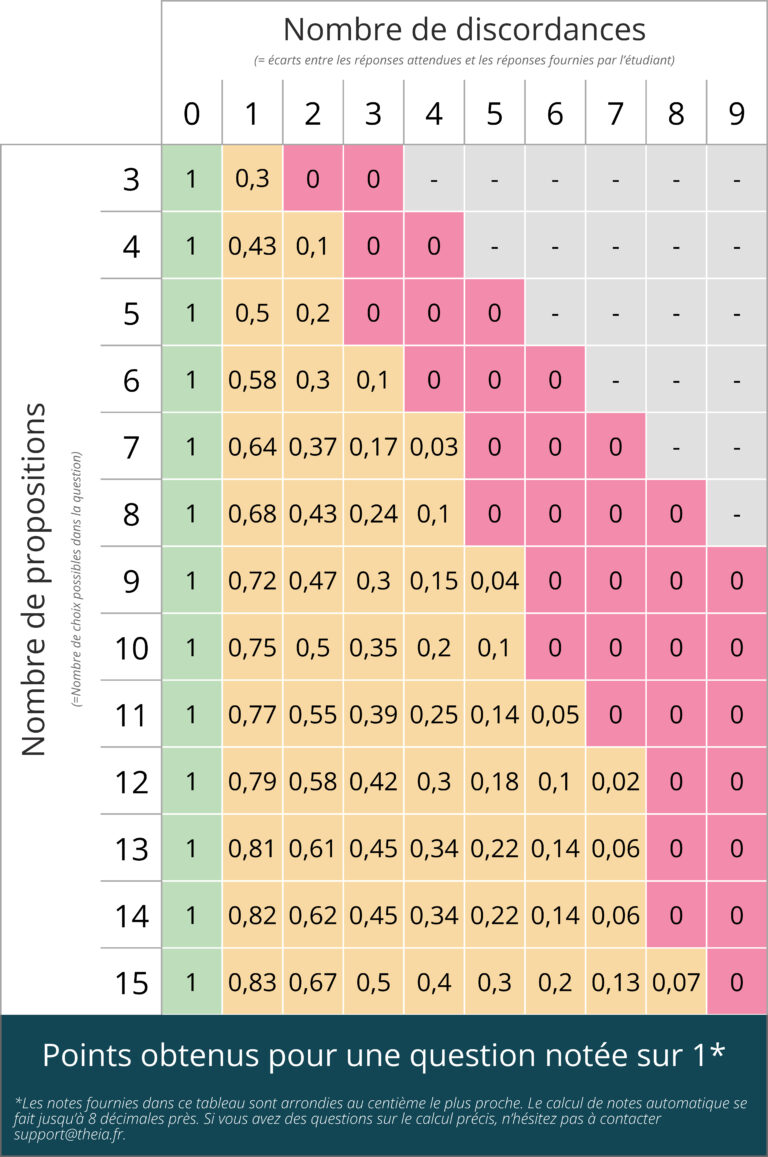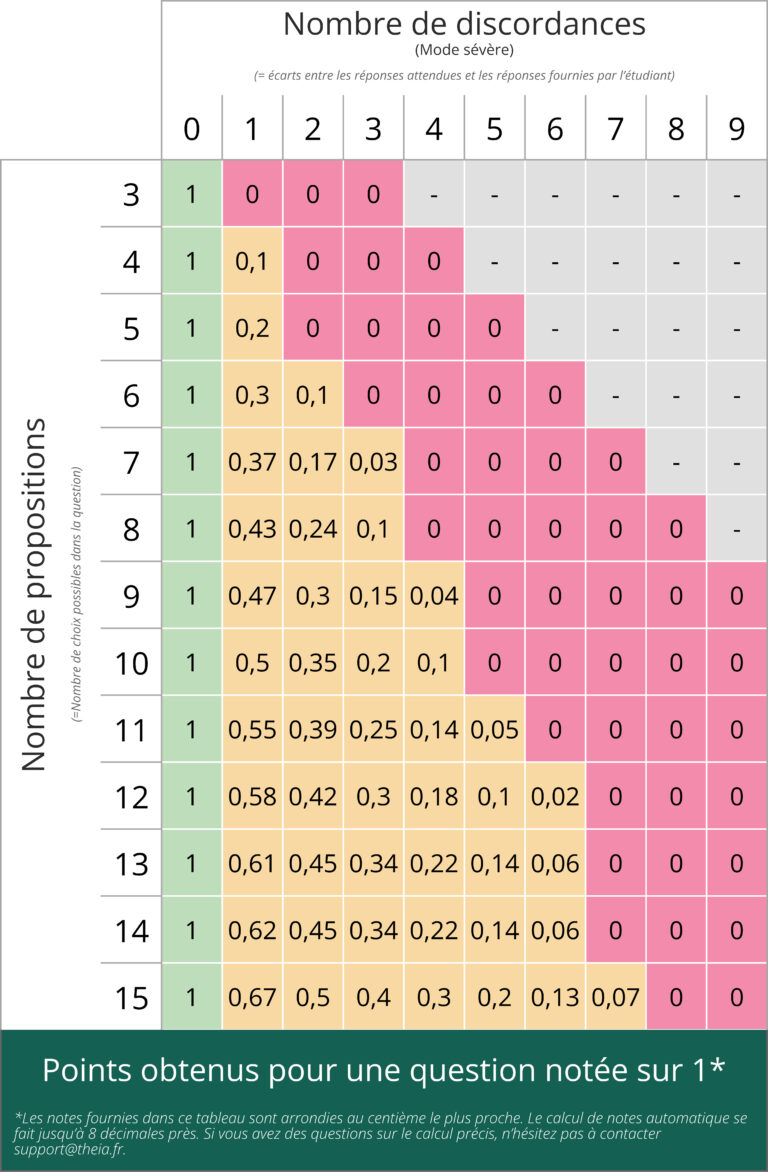Discrepancy scoring is the default scale applied to THEIA platforms. This is a specific calculation method that is applied to different types of question, in particular the MCQ. Understanding this marking system is therefore important for correctly understanding the automatic allocation of marks on your training and assessment platform.
1. What is discrepancy scoring?
Discrepancy scoring is an automatic scoring method used by the THEIA platform. It consists of comparing a student’s answers to a question with those provided by the designer. For each discrepancy (also known as a “mismatch”), the platform will count an error against the student.
In the case of an MCQ, an error can therefore be of two types: an incorrect statement that the student has ticked, or a correct answer that the student has not selected. A calculation is then made to relate the number of discrepancies to an overall score for the question. The more errors the student has made, the lower their mark will be.
Note that in the case of the MCQ, the ‘essential’ and ‘unacceptable’ options that can be applied to the suggestions when the question is designed override this marking system: if a student has ticked an unacceptable suggestion, the calculation is no longer based on discrepancies (the other correct answers that the student would have chosen or the incorrect answers that the student did not tick are no longer taken into account) and the student automatically receives a mark of 0. The same applies to an essential suggestion that has not been ticked.
In addition to the number of discrepancies received from the student, the final mark for a question depends on the number of suggestions in the question. The more propositions (and therefore possible answers) a question has, the less punitive the error will be. The result of the mark obtained is shown in the table below:

2. Classic discrepancy or severe discrepancy?
The table above is valid for all questions assessed using the classic discrepancy system. But if you need a more punitive scale, the platform also offers a variant, called “severe discrepancy”.
This system removes a grade, making it more difficult to earn points for mistakes. A new table of values then applies, which you can consult here :

3. For which questions should this scale be used?
This scoring system makes sense when a question involves several choices, and therefore several risks of error. It is therefore particularly suitable for the MCQ, but also for the ASSO and ZONE questions. You can find out more about these types of question in the dedicated tutorials.


